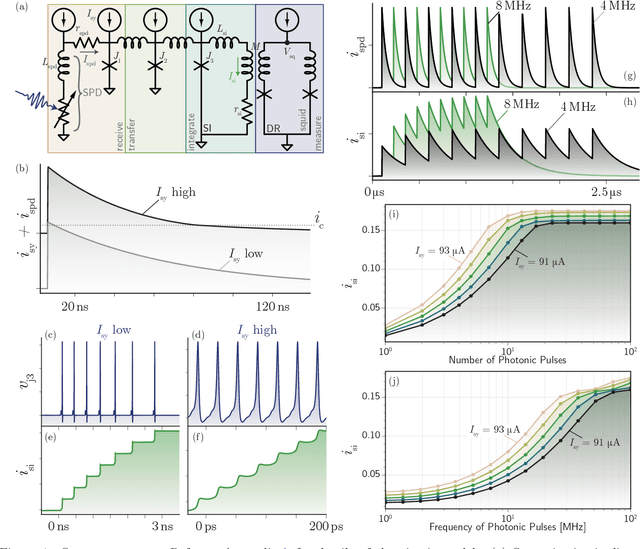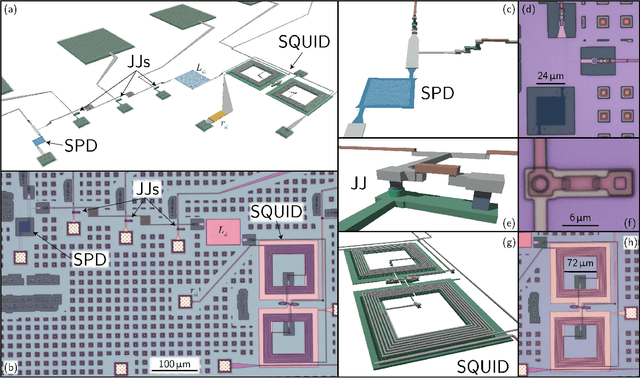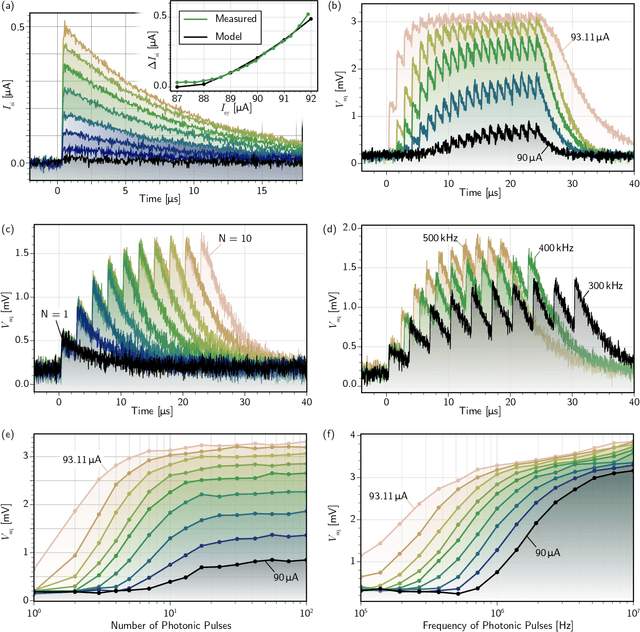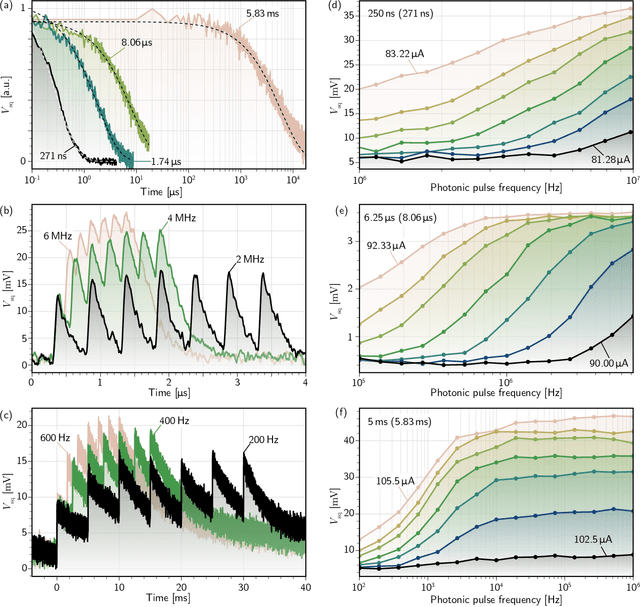Saeed Khan
Programmable Superconducting Optoelectronic Single-Photon Synapses with Integrated Multi-State Memory
Nov 10, 2023Abstract:The co-location of memory and processing is a core principle of neuromorphic computing. A local memory device for synaptic weight storage has long been recognized as an enabling element for large-scale, high-performance neuromorphic hardware. In this work, we demonstrate programmable superconducting synapses with integrated memories for use in superconducting optoelectronic neural systems. Superconducting nanowire single-photon detectors and Josephson junctions are combined into programmable synaptic circuits that exhibit single-photon sensitivity, memory cells with more than 400 internal states, leaky integration of input spike events, and 0.4 fJ programming energies (including cooling power). These results are attractive for implementing a variety of supervised and unsupervised learning algorithms and lay the foundation for a new hardware platform optimized for large-scale spiking network accelerators.
Phenomenological Model of Superconducting Optoelectronic Loop Neurons
Oct 18, 2022



Abstract:Superconducting optoelectronic loop neurons are a class of circuits potentially conducive to networks for large-scale artificial cognition. These circuits employ superconducting components including single-photon detectors, Josephson junctions, and transformers to achieve neuromorphic functions. To date, all simulations of loop neurons have used first-principles circuit analysis to model the behavior of synapses, dendrites, and neurons. These circuit models are computationally inefficient and leave opaque the relationship between loop neurons and other complex systems. Here we introduce a modeling framework that captures the behavior of the relevant synaptic, dendritic, and neuronal circuits at a phenomenological level without resorting to full circuit equations. Within this compact model, each dendrite is discovered to obey a single nonlinear leaky-integrator ordinary differential equation, while a neuron is modeled as a dendrite with a thresholding element and an additional feedback mechanism for establishing a refractory period. A synapse is modeled as a single-photon detector coupled to a dendrite, where the response of the single-photon detector follows a closed-form expression. We quantify the accuracy of the phenomenological model relative to circuit simulations and find that the approach reduces computational time by a factor of ten thousand while maintaining accuracy of one part in ten thousand. We demonstrate the use of the model with several basic examples. The net increase in computational efficiency enables future simulation of large networks, while the formulation provides a connection to a large body of work in applied mathematics, computational neuroscience, and physical systems such as spin glasses.
Demonstration of Superconducting Optoelectronic Single-Photon Synapses
Apr 20, 2022



Abstract:Superconducting optoelectronic hardware is being explored as a path towards artificial spiking neural networks with unprecedented scales of complexity and computational ability. Such hardware combines integrated-photonic components for few-photon, light-speed communication with superconducting circuits for fast, energy-efficient computation. Monolithic integration of superconducting and photonic devices is necessary for the scaling of this technology. In the present work, superconducting-nanowire single-photon detectors are monolithically integrated with Josephson junctions for the first time, enabling the realization of superconducting optoelectronic synapses. We present circuits that perform analog weighting and temporal leaky integration of single-photon presynaptic signals. Synaptic weighting is implemented in the electronic domain so that binary, single-photon communication can be maintained. Records of recent synaptic activity are locally stored as current in superconducting loops. Dendritic and neuronal nonlinearities are implemented with a second stage of Josephson circuitry. The hardware presents great design flexibility, with demonstrated synaptic time constants spanning four orders of magnitude (hundreds of nanoseconds to milliseconds). The synapses are responsive to presynaptic spike rates exceeding 10 MHz and consume approximately 33 aJ of dynamic power per synapse event before accounting for cooling. In addition to neuromorphic hardware, these circuits introduce new avenues towards realizing large-scale single-photon-detector arrays for diverse imaging, sensing, and quantum communication applications.
Land Use Detection & Identification using Geo-tagged Tweets
Jan 09, 2021



Abstract:Geo-tagged tweets can potentially help with sensing the interaction of people with their surrounding environment. Based on this hypothesis, this paper makes use of geotagged tweets in order to ascertain various land uses with a broader goal to help with urban/city planning. The proposed method utilises supervised learning to reveal spatial land use within cities with the help of Twitter activity signatures. Specifically, the technique involves using tweets from three cities of Australia namely Brisbane, Melbourne and Sydney. Analytical results are checked against the zoning data provided by respective city councils and a good match is observed between the predicted land use and existing land zoning by the city councils. We show that geo-tagged tweets contain features that can be useful for land use identification.
 Add to Chrome
Add to Chrome Add to Firefox
Add to Firefox Add to Edge
Add to Edge